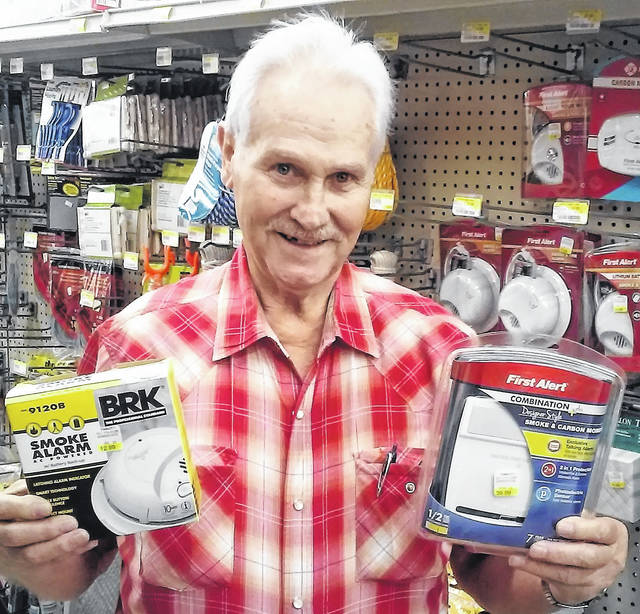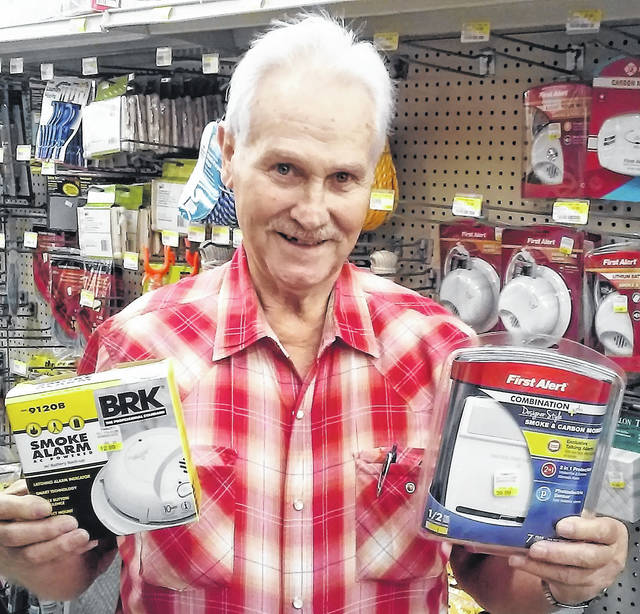

With the return to standard time Sunday at 2 a.m., Lt. Branden Jackman of the Paint Creek JointEMS/Fire Diistrict told The Times-Gazette that in addition to setting the clocks back an hour, it is vitally important now more than ever to check a home’s smoke alarm because of the modern combustibles used in everyday living.
“Today, with so many synthetic materials in our homes,” he said, “furniture, carpeting and curtains are all synthetic materials which means they’re all made of petroleum and not natural fibers, so we’re finding that if a fire breaks out, you’ve got two or three minutes to get to safety.”
He added a working smoke alarm provides that margin of safety that will determine whether “you get out of the house or you’re trapped inside.”
According to the National Fire Protection Association, three out of every five 2017 home fire deaths were the result of homes that either had no smoke alarms or had smoke alarms that didn’t work. Almost half of the fires occurred in homes that were found to have had smoke alarms, but further investigation by a fire marshal revealed the smoke alarms were either missing, disconnected or had dead batteries.
A fatal house fire on the night of May 31, 2001 showed the importance of not only having a working smoke alarm, but also the right type, according to a report from WTHR-TV in Indianapolis. Bill Hackert and his daughter, Christine of Rotterdam of, New York, died when their house caught fire and a smoke detector failed to alarm. The cause of the fire was a frayed electrical cord behind a couch that smoldered for hours before igniting and filling the house with smoke and flames. In 2006, a jury found that the First Alert ionization smoke detector was defectively designed and awarded Hackert’s estate millions of dollars in damages.
The case provides a powerful reminder about the differences in smoke alarms.
The NFPA reported that the ionization type is the most popular and lowest priced smoke alarm and responds quickly to fast-burning fires. But in fires like the Hackert house, this type often responds slowly and in some cases, does not activate at all.
“I really recommend the photo electric type,” Jackman said. “They sense a fire quicker and they also pick up smoke easier, and of course, placement is important, too.”
Photoelectric smoke alarms usually respond much faster, and the NFPA says that combination or dual sensor alarms contain both types of technology, and sell for less than $20.
Jackman advised homeowners and renters to put a smoke alarm on each floor and one outside each bedroom, in addition to one place most people never install one.
“Put one in the attic and in the basement,” he said, “because people don’t think about a problem with a furnace or if they’ve got a chimney, and if something gets started there and moves to the crawlspace and then into the walls, you’ve got a potentially fatal fire.”
The NFPA recommends testing smoke alarms every month and installing them on the ceiling or high on a wall. The organization also advises homeowners and renters to keep smoke alarms at least 10 feet away from the kitchen stove to reduce false alarms.
“We are one of the few industries in the world where we actually hope we don’t have to do our jobs,” Jackman said. “And we’re real happy when we don’t have to respond to a fire because it’s such a tragedy even if everyone got out OK. Smoke alarms don’t weigh much over a few ounces so the old adage ‘an ounce of prevention equals a pound of cure’ is really true. And don’t forget to change those batteries.”
As for the time change, in the U.S., clocks change at 2 a.m. local time. In spring, clocks spring forward from 1:59 a.m. to 3 a.m.; in fall, clocks fall back from 1:59 a.m. to 1 a.m.
Reach Tim Colliver at 937-402-2571


